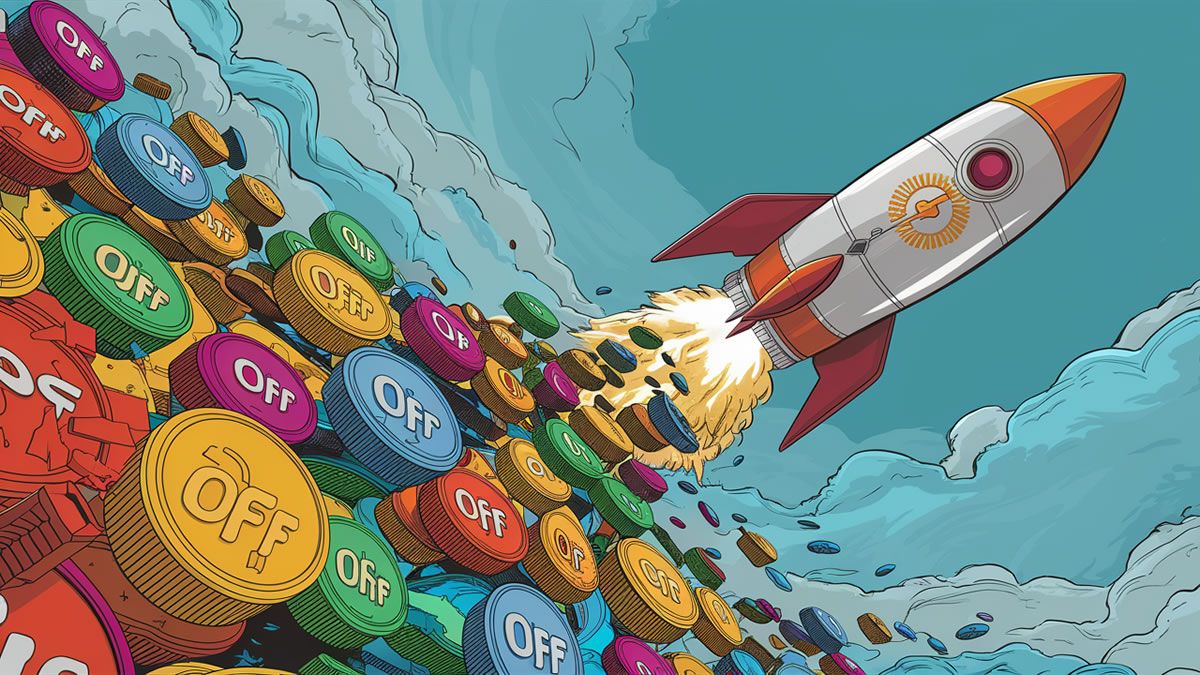What Is The Fear Index? And How Can It Be Used For Crypto Investing?
CryptoPress
Fear is a powerful motivator. From the time we’re children, we learn to avoid dark rooms, strangers, and other potential threats to our safety. Fear can also be used as a motivator for investors as well. One of the most cited measures of fear is the CBOE’s VIX Index, also called the “fear index.”
The fear index seeks to gauge how worried investors are about the financial markets. The index is based on the implied volatility of options on the S&P 500 Index. The VIX measures expectations of volatility in the S&P 500 over the next 30 days.
What is the fear index?
The fear index is a metric that attempts to identify current levels of fear in the market. It’s based on the VIX, which measures volatility in the stock market, and was developed by Chicago Board Options Exchange (CBOE) in 1993. The fear index has been used as a predictive tool for the stock market and other financial markets.
Implied volatility of options is calculated using a Black-Scholes options pricing model, which takes into account various factors like the current market price, time remaining, interest rates, and dividends.
The VIX is the most widely used index to measure the volatility of the U.S. equity markets. In layman’s terms, it measures the fear that investors have in stock markets at any given time. This fear is measured by tracking the implied volatility of S&P 500 index options, which are traded on the Chicago Board Options Exchange (CBOE).
The fear index is a measure of volatility–not a stock market indicator
It is the market’s expectation of future volatility. The higher the VIX, the greater the volatility that the market expects.
And the market likes it when volatility is low.
So, if you own stocks, you are in a bull market, and you want the market to get higher, then you want the VIX to stay low.
Why? Because low volatility means the market is calm–and calm markets tend to go higher.
A lower index number indicates that investors are feeling more confident and willing to accept lower premiums to insure debt against default.
How does the fear index work?
The fear index uses economic data to generate a score between 0 (meaning no fear) and 100 (meaning very high fear). The economic data is then used to calculate a score based on five categories: economics, market performance, investor psychology, debt, and monetary policy. Each category is given a score, which is then averaged for a final score between 0 and 100.
Volatility is a statistical measure of how much an asset’s price changes in either direction and is often used to indicate an asset’s riskiness.
How to use the fear index
Here are some examples of how to use the fear index (by TradingView):
The indicator has a history of catching at least short-term market bottoms, and it may be used in a variety of ways. The following are some examples:
1) Purchase when the shortest period VIX (9 days) climbs above the other timeframes and then falls again.
2) Surround them with Keltner Channels or Bollinger Bands – signals may be lines exiting and re-entering channels, for example.
3) Incorporate the VIX signal into several price action patterns.
Can we use it for crypto?
The cVIX
In fact, it appears there is already a crypto fear index, the cVIX, whose principles have been developed by Yosef Bonaparte at the University of Colorado Denver.
He explained in the paper in which he unfolds his theory:
“We present a theoretical and empirical methodology that reflects the Cryptocurrency version of VIX, which we name it as CVIX (Crypto VIX), and captures the future 30 days forward Crypto risk (fear). Our framework is built on idiosyncratic and systematic Crypto risk, and is not based on the option implied volatility model, that developed by the CBOE for the S&P Volatility Index VIX. For back testing, our CVIX projected with accuracy of over 89% the 30 days forward Crypto realized volatility. We apply our CVIX framework on the S&P index, and show it projects the 30 days forward realized S&P volatility with accuracy of 91.8%, while VIX’s accuracy is only 63.4%. Our framework is superior over the option based VIX due to the fact that the option market does not represents all the stock market, and our methodology accounts properly for the idiosyncratic risk.“
Yosef Bonaparte
University of Colorado at Denver – Department of Finance
Date Written: October 25, 2021
This figure depicts our CVIX in blue line versus the 30 days forward Crypto volatility in brown. Clearly, our CVIX closely mimics the 30 days forward Crypto volatility
$COTI
It also appears, based on an announcement posted on Coinmarketcap, that a decentralized “Fear Index” has been developed for the crypto space, created by COTI.
Cvi.finance presenta este índice que aparece como de gran utilidad para los traders más avanzados, y cuya explicación completa puede leerse en su nota en el blog oficial de CVI en Medium:
CVI — Market Fear Index for the Crypto Space
A new DeFi Primitive created by COTI.
I hope this article has provided you with at least a bit of inspiration for your next investment since as they say in their presentation, the development of Bitcoin ushered in the emergence of cryptocurrencies as an entirely new class of financial assets. When the derivatives market first emerged, it served as a reminder of the need for sound pricing tactics, as well as dependable risk assessments.
“There is a growing need for a new decentralized volatility index that provides a proper estimation of the risk measurement of the cryptocurrency components, and a delivery of market status information to potential investors.”
There are many dynamics in the cryptocurrency market, including systematic and idiosyncratic risks. Of course, some of the external risks can still cause price fluctuations; however, this is true with any security.
These are a few strategies available to investors who want to trade the cryptocurrency derivatives markets. The market is still nascent, so it’s important to do your research before making any cryptocurrency trading decisions. That’s not to say that trading in the cryptocurrency market is only for those with a lot of experience—it isn’t. However, it’s a vital part of your due diligence to understand the different strategies on offer for this unique asset class before you dive in and start making trades.
Image: FAVPNG – User ArcticEin.
By Juan Mende.

📈 Juan Mende is a technology, Bitcoin, blockchain, and crypto enthusiast. It has worked as a lawyer with special expertise on intellectual property and subsequently as a digital marketing specialist developing and editing content in several digital projects. Currently, he is the editor at Cryptopress, as well as a marketing manager for DiarioBitcoin.com and ComparaCripto.com.
© 2024 Cryptopress. For informational purposes only, not offered as advice of any kind.
Related
- MicroStrategy Announces Second Quarter 2021 Financial Results July 29, 2021 04:01 PM Eastern Daylight Time TYSONS CORNER, Va.–(BUSINESS WIRE)–MicroStrategy® (Nasdaq: MSTR), the largest independent publicly-traded business intelligence company, today announced financial results for the three-month period ended June 30, 2021 (the second quarter of its 2021 fiscal year)....
- Lowest Cost Bitcoin-Linked ETF to Launch on November 16: VanEck Bitcoin Strategy ETF (XBTF) Lowest Cost Bitcoin-Linked ETF to Launch on November 16: VanEck Bitcoin Strategy ETF (XBTF)...
- Bullish Goes Live With Institutional Customers After Obtaining Regulatory License in Gibraltar After obtaining a regulatory license in Gibraltar, Bullish goes live with institutional customers....
- Forward Protocol – Leaving No Child Behind in the Race for A Global Learning System MALTA Jul 05 2021 (Blockchain Wire) The current educational system has its flaws, and the list of vocal dissenters continues to grow daily. The primary argument against the system is its restrictive approach to imparting knowledge to those who submit to it....





